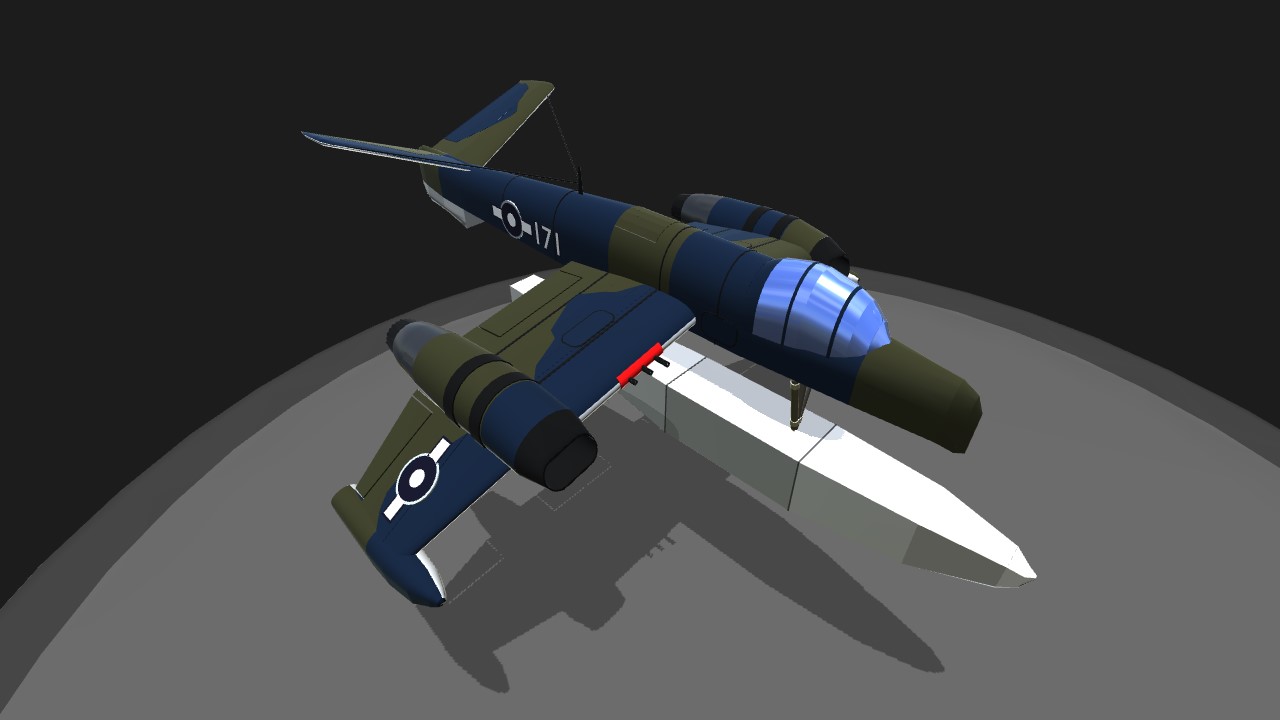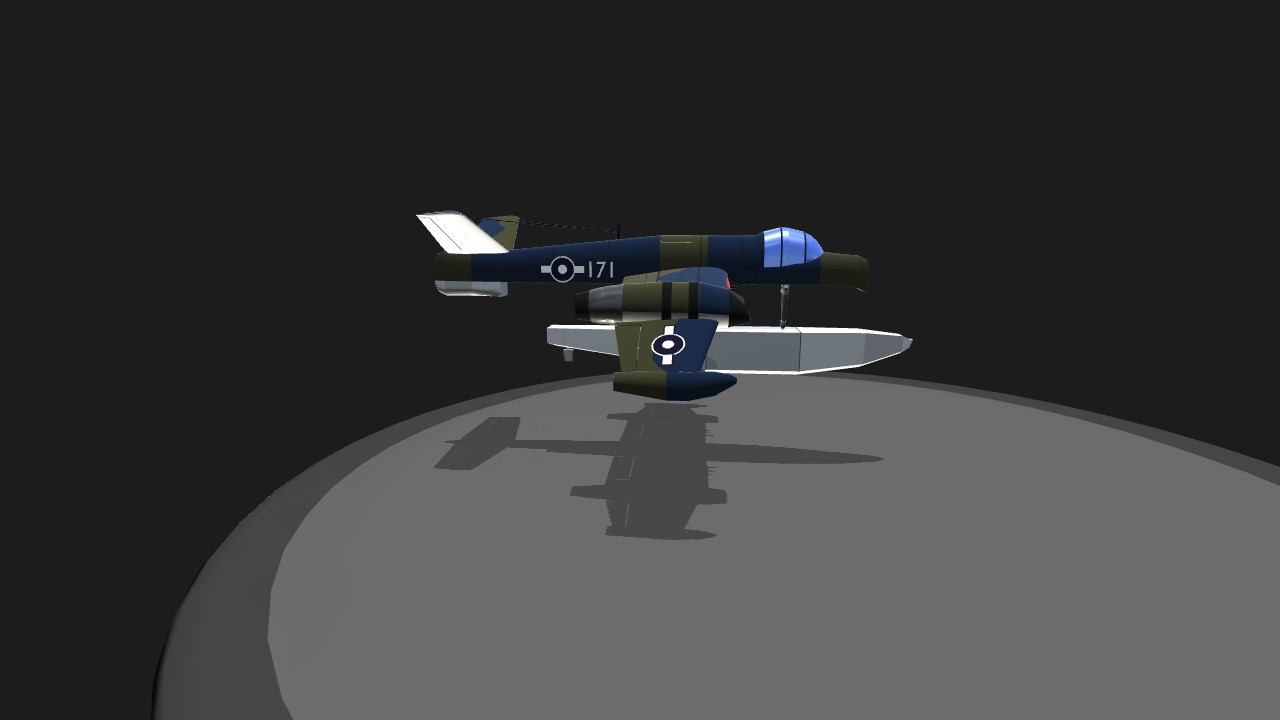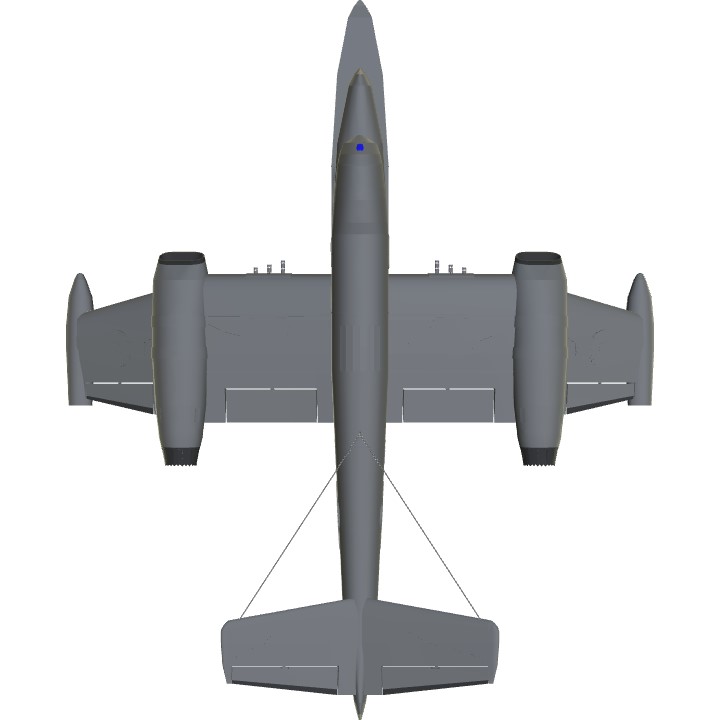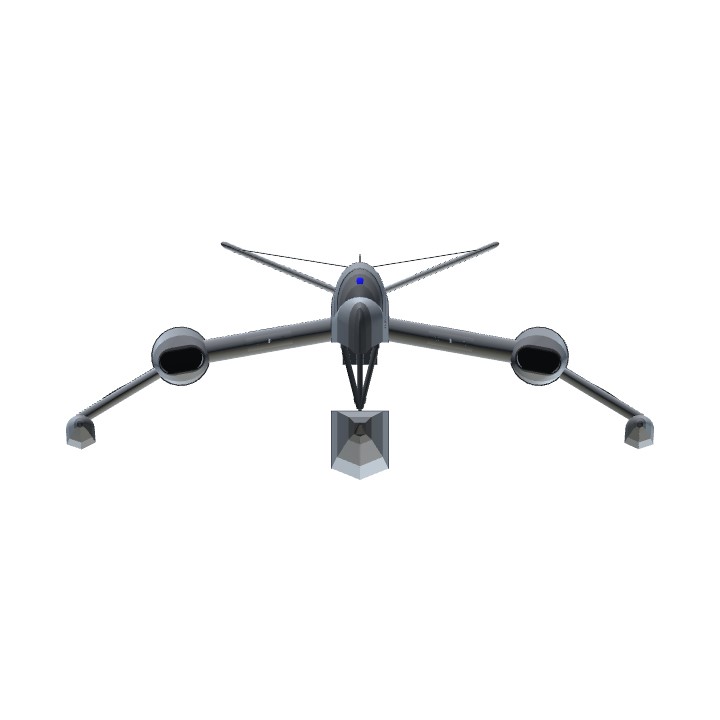Completely fictional.
AG1 retracts the floats (including the outer wings and rotates the outboard floats to sit nicely while flying), AG2 lowers / raises flaps which work and are recomended for both landing and takeoff, airbrake on brake, trim needed depending on speeds due to thrustlines. Colur scheme based on these drawings Ive kept the part count down intentionally to see if the tablet / phone users can use it.
With the introduction of the Gloster Meteor into the RAF and with the war still progressing in the pacific, the Royal Navy and Royal Airforce needed a way to combat the Japanese without using land bases or expensive carriers.
In steps SR and Blackburn which decide to collaborate. Saunder Roe having designed numerous flyingboats design the overall airframe / shape, Blackburn rely on their experience with the B.20 and B.44 flying boats persuade SR to incorporate a retractable float to raise the wing and thus the new Rolls-Royce RB.23 Welland jet engines (advatageous when spray is involved).
The Vulture was born, named due to its beak like nose. This example was one of many which served with distinction in the pacific thatre and as can be seen, has been marked up as having 6 japanese aircraft kills.




Specifications
General Characteristics
- Predecessor Flying boat SR Vulture Mk1 3.2
- Successors 1 airplane(s)
- Created On Windows
- Wingspan 21.2ft (6.5m)
- Length 25.8ft (7.9m)
- Height 8.6ft (2.6m)
- Empty Weight N/A
- Loaded Weight 12,758lbs (5,787kg)
Performance
- Power/Weight Ratio 5.284
- Wing Loading 20.2lbs/ft2 (98.7kg/m2)
- Wing Area 631.2ft2 (58.6m2)
- Drag Points 2401
Parts
- Number of Parts 455
- Control Surfaces 0
- Performance Cost 1,568







Masterful!